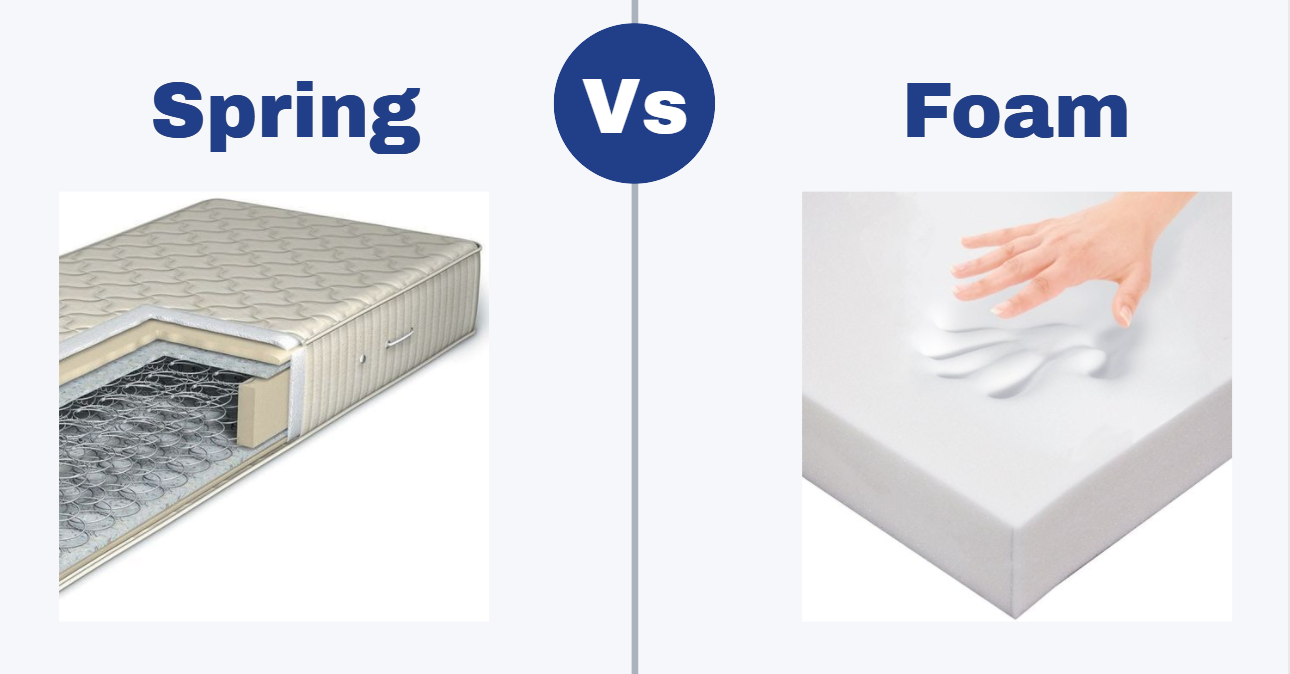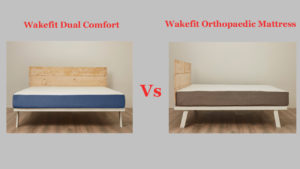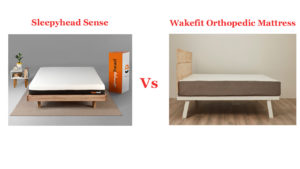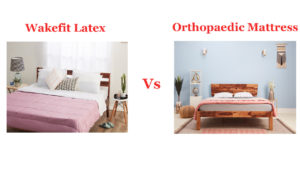Do you want to shift from foam mattress to spring mattress?
Or are you confused in deciding whether the spring material will be better for you or the foam material?
If yes, then you are at the best place. Springs and foam have different categories based on their features and characteristics. But sometimes, one can get confused in choosing the best mattress material. This is why in this article, we will talk about spring VS foam mattresses, describing the types, their performance, and several other facts.
In addition, we have also discussed the strength and weaknesses of the foam and spring material. This will give you enough knowledge about these two materials to ensure that your choice is the right one.
Contents
1. What Is Spring?
Spring mattresses are made from either interconnected or independent spring coils throughout the mattress surface area. As the springs can come in contact with the upholstery cover, felt or foam layers are introduced at the upper and lower levels of the spring layer.
- Also Read: Best Spring Mattress In India
Types of spring
- Bonnell spring
- Pocket spring
1.1 Benefits Of Spring
- Pocket spring mattresses can prevent the transfer of motion from one point to another, thereby allowing you to sleep comfortably.
- The spring coils do not emanate any kind of smell, irrespective of the age of the mattress.
- Spring mattresses are also good for applying the right amount of pressure on your body’s trigger points to ease the tensed knots.
- In addition, the spring mattresses are cheaper as the number of materials involved in their construction is less.
2. What Is Foam?
Foam is manufactured artificially in industries by combining different polymer elements along with some crude oil extracts. Therefore, the raw materials depend on the type of foam mattress you are talking about.
- Also Read: Best Foam Mattress in India 2021
Types of foam
- PU or polyurethane foam
- Memory foam
- Rebonded foam
- High Resilience foam
2.1 Benefits Of Foam
- Foam layers are softer and will help you sleep comfortably and cosily.
- There are numerous mattresses with different foam types, like HR foam paired with a soft PU layer or rebonded foam with a memory foam layer.
- This material is lightweight, which is why you can reverse the mattresses easily in case they have dual comfort technology.
- In terms of firmness, the value depends on the foam type. The PU foam has less firmness with a rating of 3 to 4, while the HR foam has a firmness rating of 7 or more.
3. Differences Between Spring Vs Foam
| Attribute | Spring | Foam |
| Edge support | Yes | No |
| Bounce | Restricted bounce | High bounce |
| Breathability | High | Less |
| Motion isolation | Yes (pocket spring) | No |
| Temperature regulation | Yes | Yes |
| Pain relief | Average | Best for alleviating back pain |
| Durability | Yes | Yes |
- Edge support: Edge support is a parameter used to define a structure where the mattress edges are strong and capable enough to handle the compression forces from above. This is why edge support is present in all the spring mattresses. But only a few foam mattresses have this technology.
- Bounce: Spring mattresses are bouncy but only to a certain extent. However, if you bounce on the mattress surface too much, the spring coils will lose their elasticity and become harder. As a result, the bounciness will decrease below the standard limit.
As for foams, the PU foam has the least bounce while the rebonded foam has the highest bounce rate. Memory foam does offer bounciness, but it mainly provides softness to the mattress surface. - Breathability: Breathability is high for the spring mattresses as they come with hollow coils that can control air circulation better. However, considering the foams, only PU and memory foams are breathable. The HR and rebonded foam are so dense that they block the air from passing through.
- Motion isolation: The foam layers can’t prevent motion transfer from the point of contact to other areas radially. That’s why your sleep can get disturbed if your partner twists or turns a lot in sleep.
However, the pocket spring mattresses can isolate the motion and prevent the force from getting transferred to other areas. Hence, you wouldn’t even feel if someone moves the leg or hand beside you. - Temperature regulation: Spring mattresses have hollow coils which allow air ventilation. However, suppose the top protective layer is highly dense. In that case, it will restrict the free air movement, thereby increasing the surface temperature over time.
On the other hand, if we talk about the foam layers. Soft PU foam maintains the temperature based on the air circulation through the pockets. In some mattresses, the memory foam is infused with microgels which absorb the heat and reduce the surface temperature. - Pain relief: Both spring and foam mattresses can help in alleviating back pain and muscle aches. However, the extent to which the pain is reduced depends on the foam and spring type used for the mattress construction. For example, pocket springs are better in releasing pressure from the trigger points in the body, while memory foam helps maintain the proper shape of the backbone.
- Durability: Foam mattresses are more durable as compared to spring mattresses. The foam material has a varying thickness and usually has a rebonded or High Resilience support layer for absorbing the shocks and force impact from above. However, when it comes to spring mattresses, their durability is compromised when the spring layers aren’t protected using the shock-absorbing foam or felt material.
4. Strength And Weakness Of Spring Mattress
Strength
- Pocket spring mattresses can prevent the flow of the motion from one point to the other, which will help you sleep comfortably.
- Spring mattresses have a high ventilation rate, which can distribute heat easily.
- There are fewer chances of moulds growing in between the layers in the case of the spring mattresses.
Weakness
- Spring mattresses can lose their elasticity sooner, thereby becoming more depressed as compared to foam mattresses.
- Sometimes, the spring mattresses can make noise, especially the Bonnell springs.
5. Strength And Weakness Of Foam Mattress
Strength
- Foam mattresses come with varying firmness, ranging from 3 to 8, depending on the foam type being used.
- Memory foam is ideal for reducing back pain and providing proper support to maintain the posture.
- Foam mattresses are lightweight, and sometimes, it can use them from both sides according to the firmness,
Weakness
- It can become harder over time, especially if soft PU foam is used
- Highly dense foam layers can resist air circulation, thereby disrupting ventilation.
6. Which Is Better: Spring Or A Foam Mattress?
To declare the answer, we will have to consider everyone’s perception because opinions differ from one user to another. But if we consider the overall factors, foam mattresses are better. First, they have varying firmness ranges and are available in different forms, each having separate functionality. Moreover, memory foam is hypoallergenic, and if infused with micro gel technology, the surface will remain cooler.
FAQ‘s
-
Is a spring mattress good for the back?
If you want to get a spring mattress for alleviating back pain and muscle aches, it is the pocket spring mattress you should choose. As the pocket springs compress and relax independently, they apply the proper pressure on the trigger points along the backbone. This reduces the aches and chronic spine problems over time.
-
How long do spring mattresses last?
As the springs are made from stainless steel, the coils have high durability. However, it is the protective felt or High Resilience foam that can easily get depressed over time, causing the springs to contact the top upholstery fabric. If this is the case, the mattress won’t last for too long. On average, a spring mattress can perform ideally for about five years.
-
Does foam absorb heat?
Usually, foam cannot absorb heat. However, if ventilation is possible within the foam layers, the heat is distributed throughout. Also, sometimes, the memory foams are infused with cooling gel technology. Under such conditions, the foam can absorb heat from the surface.
-
Does foam get softer overtime?
No, over time, the foam doesn’t get softer. With time, either the foam layers get compressed, or the air pockets present in between the fibres close off, causing the foam to harden.



